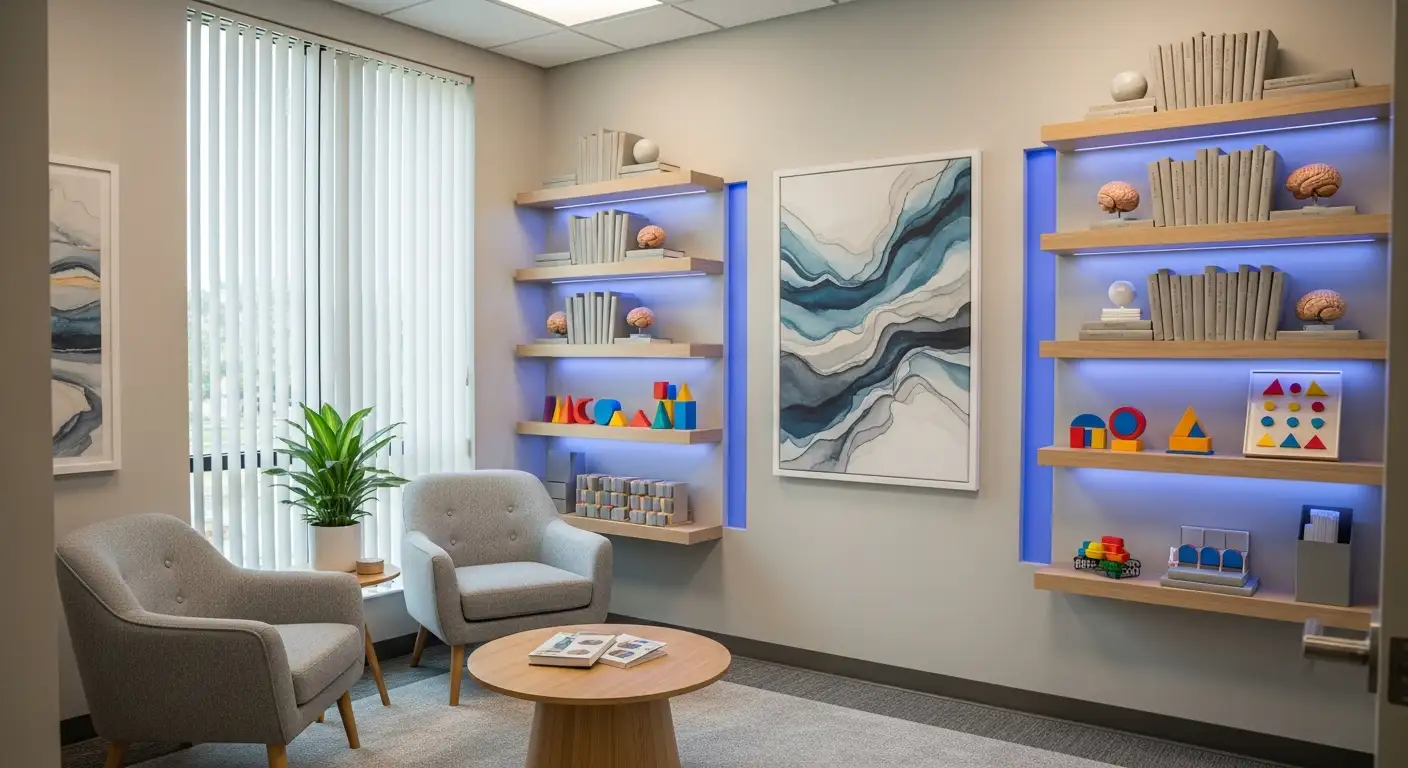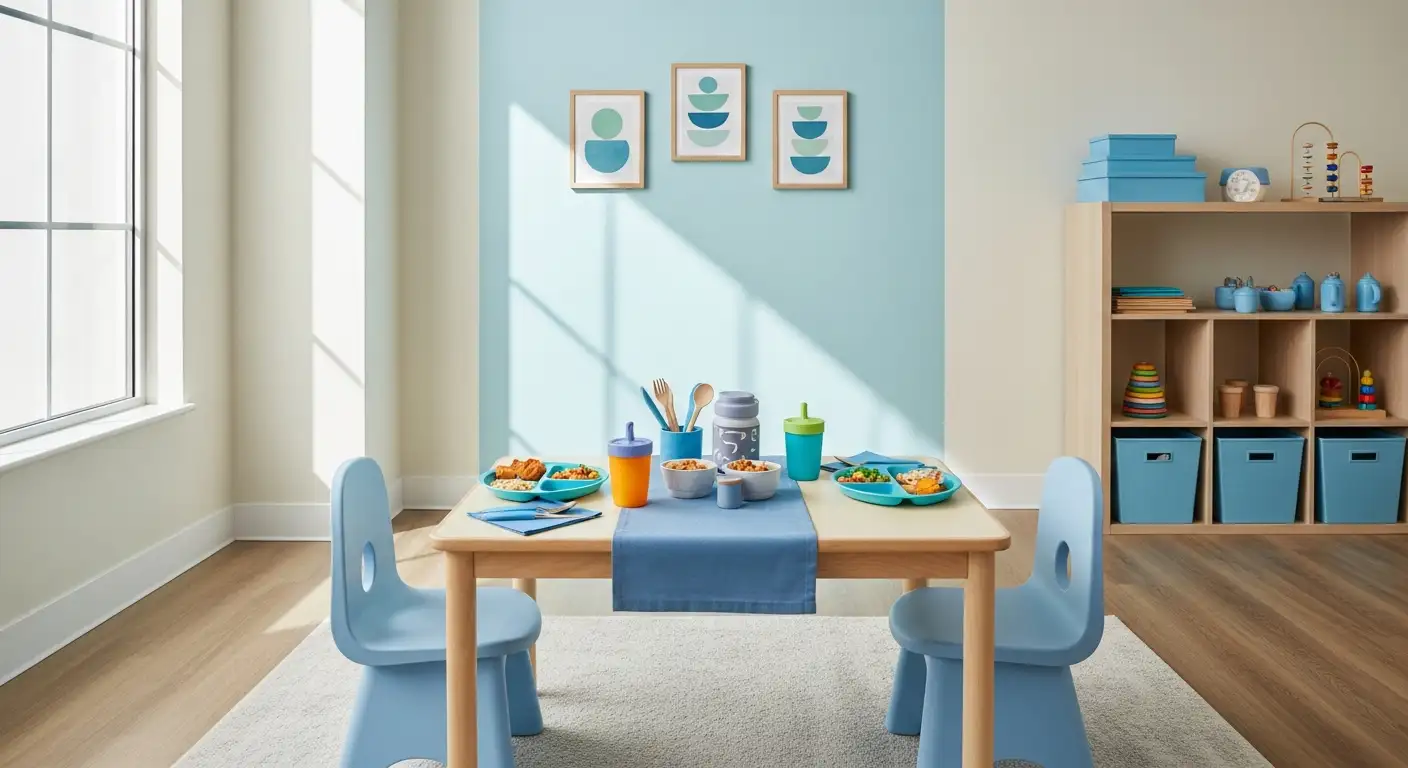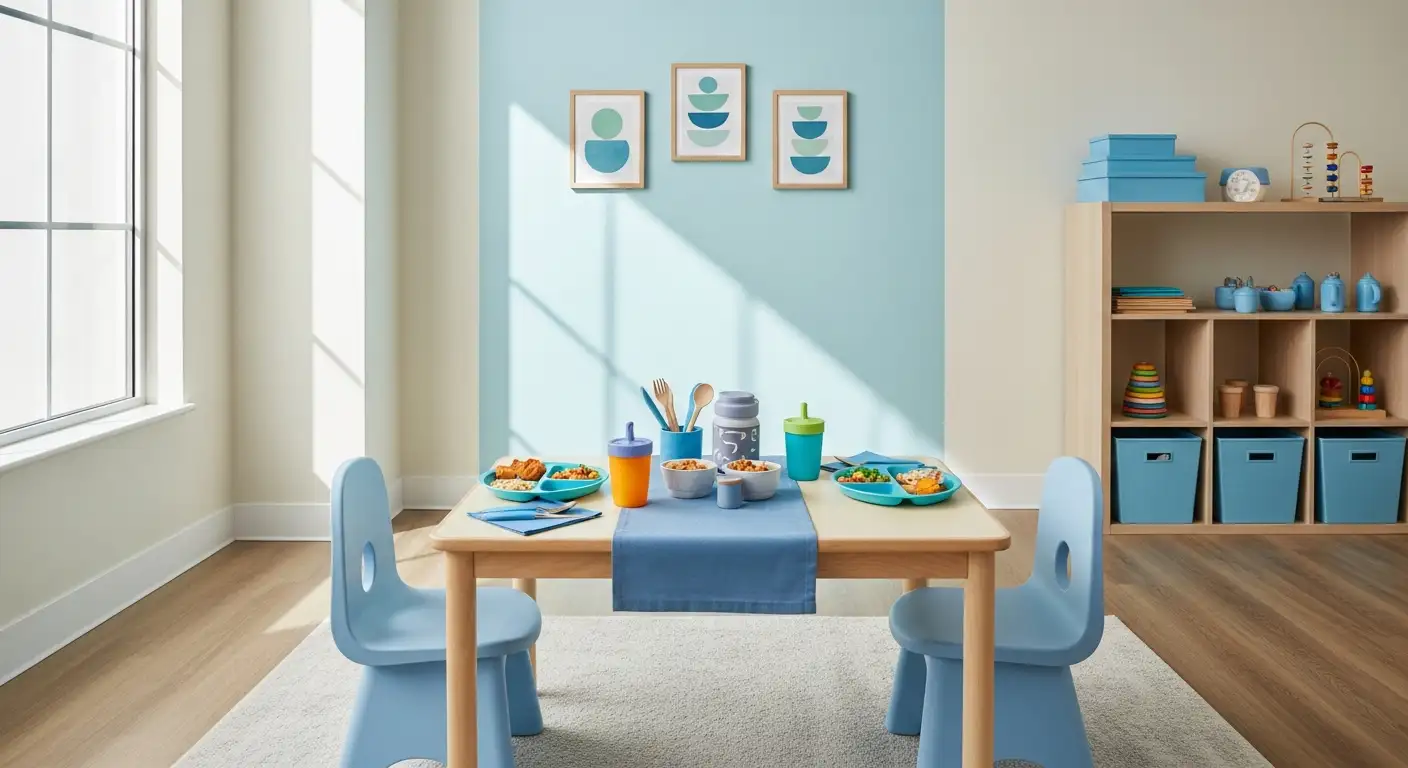Unlocking the Power of Play in ABA Therapy
Play is a fundamental component of ABA therapy, especially for children with autism spectrum disorder (ASD). It creates a natural, engaging, and motivating environment that significantly enhances the learning process. This article explores effective ways to incorporate play into ABA sessions, the benefits it offers, and practical strategies for therapists, behavior technicians, and families to make therapy both enjoyable and productive.
The Benefits of Play-Based Interventions in ABA Therapy
What are the benefits of using play-based interventions in ABA therapy?
Play-based interventions in ABA therapy provide a host of advantages that make learning both effective and enjoyable for children with autism. By incorporating play, therapy sessions become more engaging and feel more natural, which helps increase a child's motivation to participate.
Engagement is further supported by using activities aligned with the child's specific interests, such as favorite toys, hobbies, or characters. This personalization makes tasks feel less like work and more like play, encouraging active participation.
Play creates opportunities for children to develop essential social, communication, and cognitive skills. For example, through turn-taking games, pretend play, and group activities, children learn cooperation, sharing, and patience. Communication skills are fostered using cause-and-effect toys, requesting games, and songs, helping children express themselves and understand others.
Cognitive development is supported through puzzles, matching games, and building activities, which enhance problem-solving, categorization, and planning skills. Play activities also promote emotional regulation and help children explore and express feelings in a safe environment.
Moreover, play-based ABA facilitates the generalization of learned skills, meaning children can transfer behaviors learned in therapy to real-life situations. This natural environment teaching (NET) approach encourages children to practice skills in varied contexts, boosting their confidence and independence.
Building positive relationships is another crucial benefit. Play helps therapists and families establish trust and rapport with children, creating a supportive atmosphere that reduces anxiety and fosters a willingness to learn.
Overall, integrating fun and personalized play activities into ABA therapy leads to better engagement, skill acquisition, and generalization, significantly enhancing therapy outcomes for children with autism.
Strategies for Effectively Incorporating Play into ABA Sessions

What are effective strategies for incorporating play into ABA therapy sessions?
Integrating play into ABA therapy is a proven way to make sessions engaging, motivating, and meaningful for children. One of the most effective approaches is to align activities with the child’s individual interests. Whether it’s favorite toys, characters, or hobbies, tailoring activities ensures the child feels more connected and eager to participate.
Following the child’s lead is another essential strategy. When therapists observe and support the child’s natural play tendencies, it fosters autonomy and makes learning feel less like a demand and more like exploration. This approach not only increases engagement but also encourages spontaneous communication and social interaction.
Modeling play behaviors is crucial to teaching new skills. For example, demonstrating how to share or take turns during a game helps children understand expected social norms.
Encouraging various types of play, such as solitary play (playing alone with a toy), parallel play (playing alongside others), and cooperative play (working together), targets different developmental areas. These activities promote independence, social skills, and emotional regulation.
Celebrating small wins—such as successfully taking a turn, requesting help, or sharing a toy—reinforces positive behavior. Using praise, stickers, or high fives during play boosts motivation and builds confidence.
Incorporating these strategies within structured yet flexible sessions creates an enjoyable learning environment. It helps children develop essential social, communication, and cognitive skills in a natural setting, making therapies more effective and less stressful.
Building Rapport and Enhancing Engagement through Play

How can play be used to build rapport and increase engagement during ABA therapy?
Play serves as a foundation for creating a positive and trusting environment in ABA therapy. By tapping into a child's natural interests, therapists can establish a connection that fosters comfort and enthusiasm for learning.
Incorporating activities that the child enjoys—be it favorite toys, characters, or hobbies—makes sessions more engaging and less intimidating. When children see therapy as fun, they are more likely to participate actively and stay motivated.
Movement and physical activities, such as obstacle courses or dancing, add an element of excitement that captures the child's attention. These activities not only promote gross motor development but also make the experience lively and enjoyable.
Adding humor and silly activities, like funny voices or playful jokes, helps reduce tension and creates a cheerful environment. Positive reinforcement—like high fives, stickers, or enthusiastic praise—further encourages positive interactions and builds a sense of achievement.
Giving children choices during activities enhances their sense of autonomy. For example, letting them pick the game or activity they want to do increases their sense of control, making them more eager to participate.
Overall, using play as a tool in ABA therapy fosters trust, motivates children, and builds a strong foundation for meaningful learning and progress. Integrating fun and personalized activities ensures therapy sessions are both effective and enjoyable, leading to better engagement and stronger therapeutic relationships.
| Play Strategy | Example Activity | Purpose | Additional Notes |
|---|---|---|---|
| Interests-based play | Favorite toys or characters | Builds trust and motivation | Tailor to individual child's passions |
| Movement and physical play | Dance, obstacle courses | Increases engagement and develops motor skills | Add fun movement breaks |
| Humor and silly activities | Funny voices, jokes | Reduces tension and fosters rapport | Use humor appropriately |
| Providing choices | Selecting games or activities | Promotes autonomy | Encourages independence |
| Positive reinforcement | Cheers, stickers, tokens | Motivates and reinforces engagement | Use preferred rewards |
Incorporating these play techniques into ABA sessions not only enhances learning but also transforms therapy into a positive, enjoyable experience that supports the child's development and trust.
Examples of Play Activities Suitable for ABA Sessions

What are examples of play activities suitable for ABA sessions?
In ABA therapy, play activities are carefully selected to make learning engaging and effective for children. Structured play, such as role-playing exercises, is a common approach. For instance, children might practice greeting someone, ordering food at a pretend restaurant, or playing house to develop social and communication skills. These activities mimic real-life scenarios, helping children learn practical skills in a fun context.
Turn-taking games like board games, or simple imitation activities such as copying gestures or sounds, foster social interaction and joint attention. Sensory integration activities, including playing with textured toys or water tables, help children process sensory information and improve focus.
Using preferred toys or hobbies aligned with the child's interests naturally increases motivation. For example, if a child enjoys cars, incorporating toy cars into play can make learning tasks more appealing.
Activities aimed at developing speech and language skills include requesting games where children learn to ask for items, singing songs to enhance vocabulary, and engaging in pretend play that encourages narrative skills. Social skills are strengthened through activities like sharing toys, practicing patience, and engaging in group games.
Ultimately, these play activities are tailored to each child's unique strengths and preferences, creating a positive, motivating environment that promotes skill acquisition and enjoyment. When therapy integrates these playful methods, children often demonstrate improved engagement, better retention of skills, and a more joyful learning experience.
Integrating Play through Approaches like Natural Environment Teaching (NET)

What approaches integrate play into ABA therapy, such as Natural Environment Teaching (NET)?
Natural Environment Teaching (NET) is a prominent approach that brings play directly into a child's usual surroundings, making learning both fun and practical. This method involves therapists joining children in their everyday environments—such as home, school, or community settings—and engaging in play-based activities that promote essential social, communication, and daily living skills.
By embedding teaching moments into natural routines, NET creates an engaging and motivating experience. For example, a therapist might use pretend play with toy kitchens or grocery shopping during real shopping trips. This not only helps children learn specific skills but also makes the environment relevant to their daily lives.
Other techniques that incorporate play include Pivotal Response Training (PRT) and task analysis. PRT focuses on pivotal behaviors like motivation and self-initiation, implementing play-based activities to encourage spontaneous use of skills. Task analysis breaks complex skills into smaller, manageable steps within play routines, thereby making learning accessible and encouraging.
These play-centered strategies are highly effective because they promote learning in fun, meaningful contexts. They also foster greater social interaction, communication, independence, and skill generalization across settings. Recognized programs, including those in Washington State, leverage these methods to offer personalized, comprehensive support for children and their families.
How does using a child's natural environment benefit therapy?
Utilizing a child's natural environment helps reinforce learning by connecting skills to real-life situations. Children are more likely to transfer what they learn during therapy sessions to their daily routines. Additionally, these environments increase motivation, as tasks feel purposeful and engaging.
How does embedding skill-building into everyday routines enhance learning?
Embedding skill development into routines—like mealtime, play, or errands—makes learning seamless and contextually relevant. It encourages children to practice skills naturally, leading to better retention and generalization.
How can these approaches boost motivation and relevance?
Playing with familiar toys, engaging in favorite activities, or involving loved ones makes therapy enjoyable and meaningful. This relevance encourages children to participate actively, which enhances motivation and learning outcomes.
How do these methods support the generalization of skills?
Since skills are practiced in diverse, real-world settings, children are more likely to apply them outside therapy. The hands-on, fun nature of play-based learning fosters consistent skill use across environments.
How do these approaches support social and communication development?
Play-based activities naturally promote social exchanges, turn-taking, and language use. Children learn to communicate through gestures, words, or social cues during engaging play, effectively building foundational social skills.
| Approach | Focus | Benefits | Description |
|---|---|---|---|
| Natural Environment Teaching (NET) | Play in natural settings | Promotes real-world skill transfer and motivation | Uses everyday routines and environments for learning |
| Pivotal Response Training (PRT) | Motivation and initiation skills | Enhances spontaneous communication and social behaviors | Incorporates play to motivate and reinforce behaviors |
| Task Analysis | Breaking skills into steps | Improves learning efficiency | Divides complex skills into manageable play-based steps |
Effective play-based ABA therapy relies on understanding each child's interests to tailor activities. This personalized approach maximizes engagement, promotes skill retention, and fosters independence, making therapy a positive and meaningful experience.
Making ABA Sessions More Engaging and Enjoyable with Play

How can ABA therapy sessions be made more engaging and enjoyable through play?
Integrating play into ABA therapy can significantly boost a child's motivation and active participation. By selecting activities that reflect the child's unique interests and obsessions, therapists can create a personalized learning environment that feels natural and exciting. For instance, if a child loves dinosaurs or specific characters, incorporating these themes into play can make learning more relevant and enticing.
Dynamic and movement-centered activities help energize sessions. Using games that involve physical activity, like obstacle courses or dance breaks, not only make therapy sessions fun but also support gross motor development. These engaging movements help children stay focused and reduce any feelings of fatigue or boredom.
Applying positive reinforcement strategies, such as tokens, favorite toys, or special snacks, further encourages children to participate enthusiastically. These rewards are particularly effective when they are meaningful to the child, reinforcing desired behaviors and making the learning process rewarding.
Adding humor and playful tones—such as funny voices, silly faces, or jokes—can ease anxiety and foster trust between children and therapists. Creating a lighthearted atmosphere helps children feel comfortable and eager to engage.
Allowing children to make choices and have some autonomy over activities boosts their sense of control and enjoyment. Giving options like selecting a game or activity empowers children and makes the learning experience more fulfilling.
In summary, making ABA sessions fun through play involves customizing activities to match the child's interests, incorporating movement and lively activities, using rewarding strategies, infusing humor, and providing choices. These approaches create a positive, motivating environment that enhances both learning and the child's overall experience.
Harnessing Play for Better Outcomes in ABA Therapy
Incorporating play into ABA therapy is essential for creating an engaging, motivating, and effective learning environment for children with autism. Through tailored activities, naturalistic approaches like NET, and targeted reinforcement strategies, therapists and parents can foster meaningful progress in social, communication, and cognitive skills. Emphasizing fun and individualized play experiences not only enhances skill acquisition but also builds trust, reduces anxiety, and makes therapy a positive part of the child's routine. When play is thoughtfully integrated, ABA therapy becomes more than just a clinical activity; it transforms into a joyful journey of growth and discovery.
References
- Using Play as a Teaching Tool in ABA Therapy
- The Ultimate Guide to Creating Fun ABA Therapy Sessions
- A Guide to Applied Behavior Analysis (Play-Based Approach
- Why Play is Essential to ABA Therapy for Autistic Children
- Using Games to Engage Kids in ABA Therapy - ABA Therapist Jobs
- The Power Of Play In ABA Therapy - Willow Reach
- How to Make ABA Therapy Session Fun for Children










